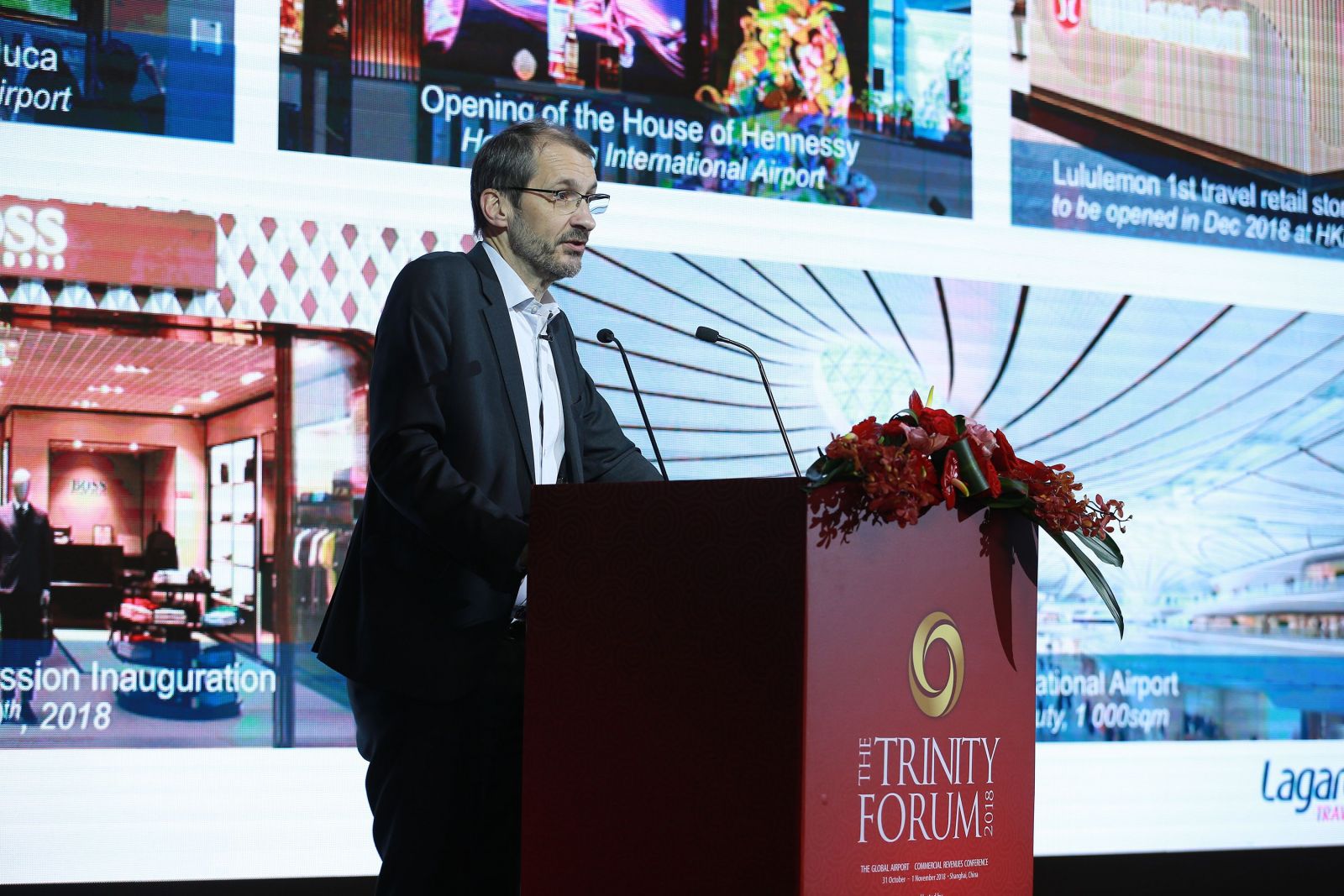A brighter future for the Trinity, a better experience for the consumer
In his day two keynote, Lagardère Travel Retail Chairman & Chief Executive Officer Dag Rasmussen considered the opportunities presented by China and Chinese travellers and presented the group’s vision of a digital future.
Lagardère Travel Retail Chairman & Chief Executive Officer Dag Rasmussen considered how flexibility and new thinking can help create a better future for the Trinity partners and for the consumer.

Rasmussen explained how Lagardère is dealing with the changing airport and travel retail commercial ecosystem today. Key measures include a reassessment of customer profiles, a more tailored retail offer and a new approach to digital: using technology to communicate with customers in novel and creative ways. He also reinforced the critical importance of understanding the Chinese consumer.
Rasmussen explained that travel retail, at least for Lagardère, is no longer only about selling products. It’s about the reasons for purchase and how the customer connects to the product.
Convenience, localness and authenticity, gifting, experience: these categories are now more relevant than traditional product categories, he said. In some of Lagardère Travel Retail’s platforms, he added, local products account for 40-45% of duty free sales.
“We believe the Chinese population is the driving force of travel retail.”
This approach informs the retailer’s strategy, which will increasingly focus on digitalisation. To make this leap forward, he noted, it is essential to connect with the traveller in advance of their trip. “We know that more than half of purchases are planned before arriving at the airport,” he said.
Lagardère sees four main elements to the digital impact in travel retail. “The first is new services, such as click and collect or shop and collect. The second is ‘facilitate and augment’; we believe that staff is essential and we want to help the staff. We equip them with tablets, which allow them to tell the story of their brands and also offer basic features such as converting the price to the customer’s home currency.”

Engagement is the third, which is being built with platforms such as Boulevard de Luxe and Voyage, which target high-end customers and augment the airport offering. And the fourth is efficiency, meaning the use of technology to increase efficiency in every area of the business and improve the customer journey.
Turning to the business model, Rasmussen said that falling spend per passenger is a reality. He proposed a new structure that focuses on flexibility in contracts and a new tender bidding structure.
“We know that more than half of purchases are planned before arriving at the airport.”
Changing the model, said Rasmussen, should aim to create a new kind of competition, one that focuses on who can bring the most innovative and engaging experience to the airport, not simply who pays the most rent.
For more on Lagardère Travel Retail’s strategy and Dag Rasmussen’s views on the tender model, click here to access an interview in our October Online edition.


The Moodie Davitt e-Zine | Issue 252 | 16 November 2018
